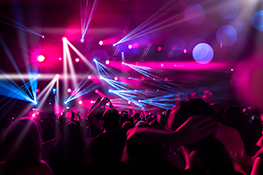The Basics of Theatre Lighting for New Designers
Theatre lighting is a powerful tool that can transform a stage, enhance storytelling, and evoke emotions in the audience. If you’re a new theatre lighting designer, understanding the basics is crucial for creating impactful and engaging productions. This article will guide you through key concepts, techniques, and equipment to get you started on your lighting design journey.
Understanding the Fundamentals
1. Light and Color
Light is the foundation of theatre lighting. It has three main properties that designers manipulate:
- Intensity: The brightness of the light, controlled by dimmers.
- Color: The hue of the light, achieved using gels or LED color mixing.
- Direction: The way the light is pointed, impacting the shape and texture of objects on stage.
By adjusting these properties, you can create different moods, highlight specific areas, and emphasize the action.
2. The Lighting Console
The lighting console is the heart of the lighting system. It allows you to control the intensity and color of individual lights, create scenes, and program cues for the show.
3. Types of Theatre Lights
There are various types of theatre lights, each with unique characteristics:
- Fresnel: Produces a soft, even beam of light, ideal for washes and general illumination.
- PAR Can: A versatile fixture with a wider beam angle, often used for backlighting or special effects.
- Ellipsoidal Reflector Spotlight (ERS): Creates a sharp, focused beam, perfect for spotlighting actors or specific objects.
- LED Fixtures: Increasingly popular due to their energy efficiency, long lifespan, and color-changing capabilities.
Creating Effective Lighting Designs
1. Visual Storytelling
Lighting is not just about illuminating the stage; it’s about telling the story visually. Use light to guide the audience’s attention, enhance mood, and create a sense of place and time.
2. Shaping the Stage
Consider how you can use light to sculpt the stage space. Create depth and dimension through shadows, highlight textures, and manipulate the audience’s perception of the environment.
3. Mood and Emotion
Light is incredibly effective at evoking emotions. Warm colors can convey comfort and intimacy, while cool colors can create a sense of distance or tension. Experiment with color combinations and intensity to achieve the desired emotional impact.
4. Lighting Cues
Lighting cues are pre-programmed changes to the lighting, often timed to specific moments in the show. They can be used to highlight dramatic transitions, emphasize character entrances, or create visual effects.
Essential Tips for New Designers
- Start simple: Focus on mastering basic techniques before attempting complex designs.
- Collaborate with the director: Discuss the play’s themes, mood, and visual elements to ensure your lighting design complements the overall vision.
- Experiment and practice: Don’t be afraid to try different techniques and experiment with various lighting effects.
- Seek feedback: Ask for feedback from experienced designers and colleagues to improve your skills.
Conclusion
Theatre lighting is a rewarding and creative field. By understanding the fundamentals, practicing your skills, and collaborating with other artists, you can create impactful and unforgettable lighting designs. Explore the world of theatre lighting and let your creativity shine!
Contact Us
For all your theatre lighting needs, contact StageLights.in:
- Phone: 1800 200 6000
- Mobile: +91 90150 60000
- Email: info@stagelights.in


 Auditorium Construction Services
Auditorium Construction Services 